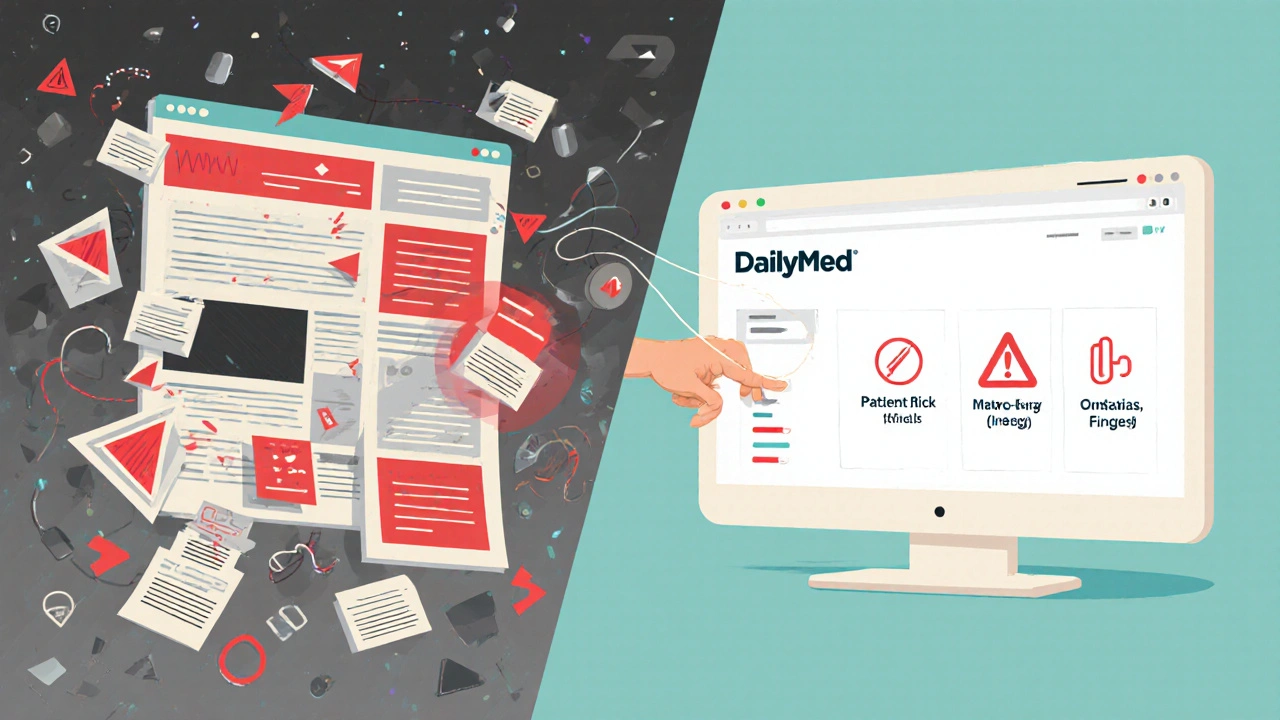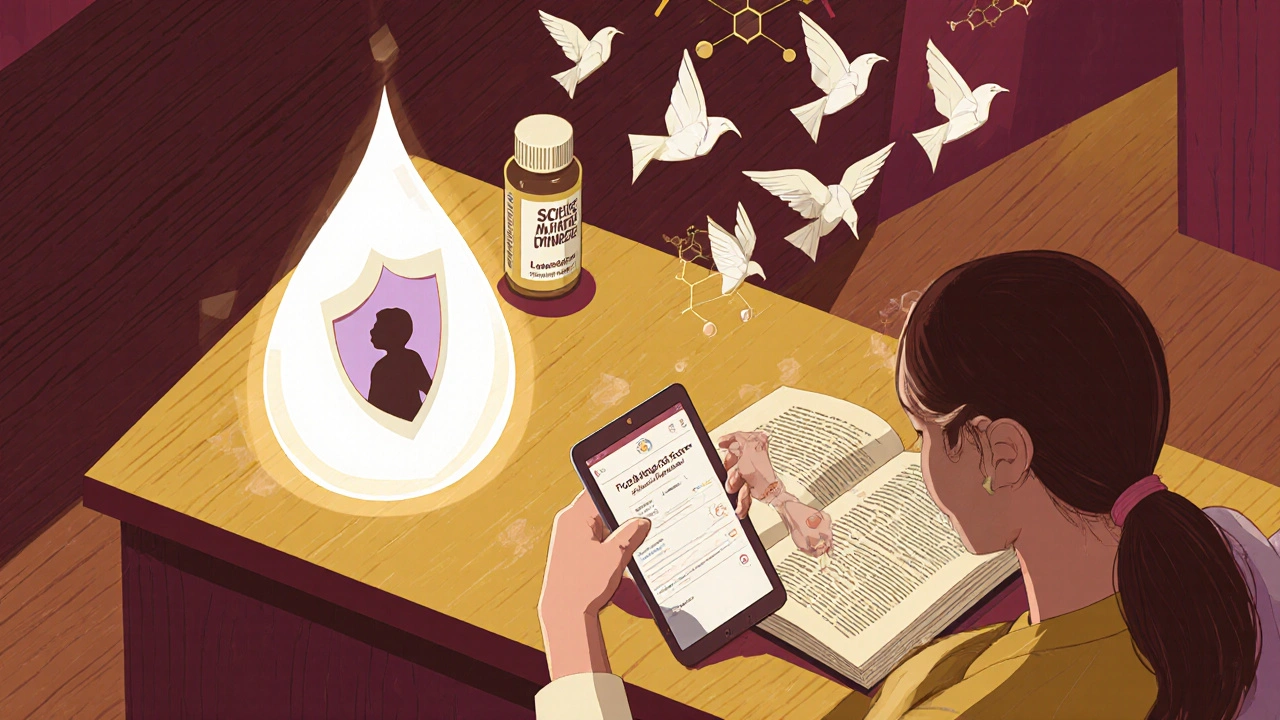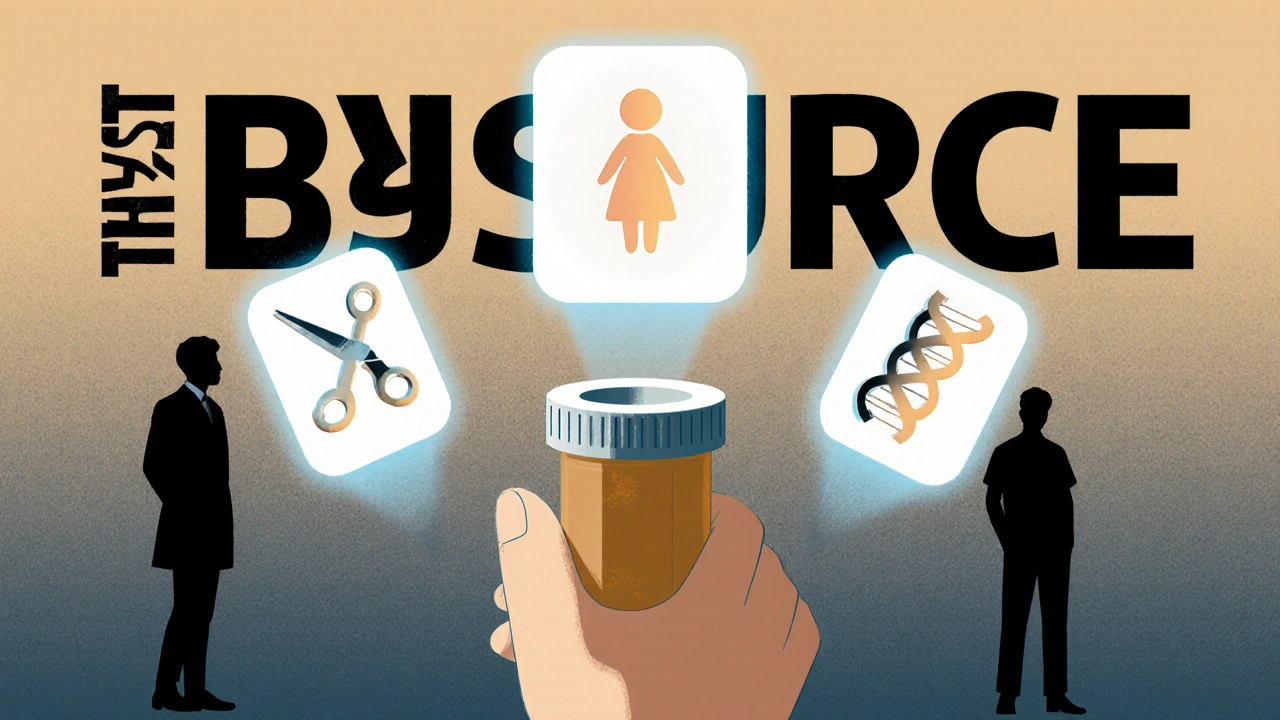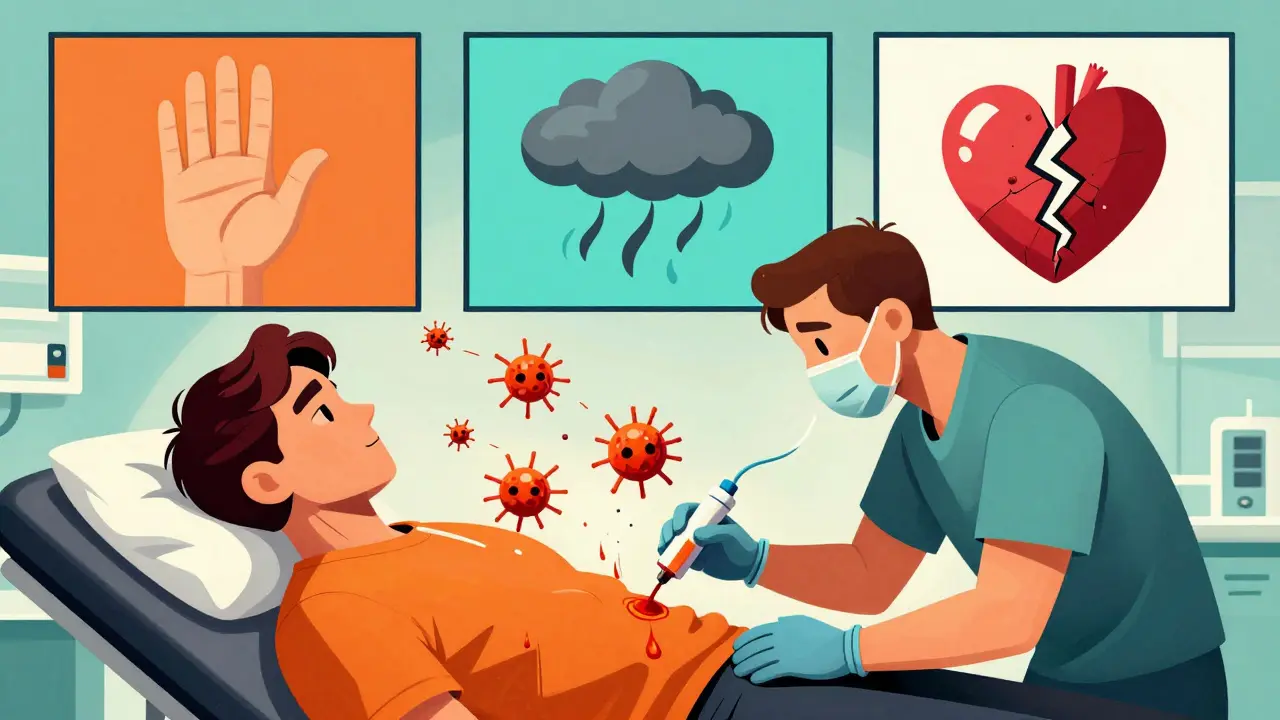Drug Safety & Interaction Checker
Verify Medication Safety
Check official FDA-approved information about drug safety during breastfeeding and potential interactions with other medications. All data comes from trusted government resources like LactMed and DailyMed.
Safety Information
Knowing what’s in your medication shouldn’t feel like solving a puzzle. Yet every day, patients stare at pill bottles, read confusing labels, and wonder: Is this safe? Will it interact with my other drugs? Can I take this while breastfeeding? The truth is, most websites you find through a quick Google search aren’t built to help you-they’re built to sell you something. Ads, sponsored content, and oversimplified advice can lead to dangerous misunderstandings. The best place to find accurate, unbiased, and up-to-date drug information isn’t a marketing site. It’s a government-run database. And you don’t need a medical degree to use it.
DailyMed: The Official FDA Drug Label Repository
DailyMed is the only place online where you can see the exact drug labels approved by the U.S. Food and Drug Administration. No edits. No summaries. No ads. Just the full, official documents that pharmacies and doctors use. It’s run by the National Library of Medicine, which means it’s funded by taxpayers-not drug companies. As of October 2023, it had over 142,000 drug entries, updated daily with every new FDA submission.
Think of it like a legal document. If your doctor says your prescription changed, you can go to DailyMed, type in the drug name, and check the exact dosage, warnings, side effects, and storage instructions. One patient in Ohio found out her bottle said 5 mg, but the official label said 2.5 mg twice daily. She caught the error before taking the wrong dose. That’s the power of going straight to the source.
The catch? The full label is written for doctors, not patients. Most of it reads at a 12th-grade level or higher. That’s why DailyMed added something new in June 2023: Patient-Friendly Highlights. These are short, plain-language summaries at the top of every new drug label. They explain the most important info-what the drug is for, how to take it, and the top risks-in language anyone can understand. Look for that section first. Skip the rest unless you need details.
LactMed: The Only Trusted Resource for Breastfeeding Safety
If you’re pregnant or breastfeeding and wondering whether your medication is safe for your baby, you need LactMed. There’s no other resource like it. It’s not a blog. It’s not a forum. It’s a science-based database built by the same team behind DailyMed, with input from the Academy of Breastfeeding Medicine. It covers over 4,200 drugs, chemicals, and herbal products, all reviewed for their impact on breast milk and infant health.
For example, if you’re on sertraline for depression and want to keep breastfeeding, LactMed tells you: the amount passed into milk is very low, infant blood levels are usually undetectable, and no adverse effects have been reported in over 100 exposed infants. It even lists alternatives if needed. That kind of clarity saves lives. In a 2023 study in the Journal of Human Lactation, mothers used LactMed to continue breastfeeding during chemotherapy because they knew the risks were manageable.
It’s updated weekly. Everything is cited from peer-reviewed studies. And since February 2024, every monograph is available in Spanish too. The interface is simple: type in the drug name, read the summary, and you’ll know whether to pause, adjust, or keep going. No guesswork. No fear.

DrugBank: Deep Science for the Curious Patient
If you’re the kind of person who reads the fine print, loves science, or has a rare condition, DrugBank is your hidden gem. Created by researchers at the University of Alberta, it’s built for scientists-but it has a free tier for patients. It contains over 13,500 drug entries, including 2,720 FDA-approved medications. Unlike DailyMed, which gives you the label, DrugBank gives you the science behind it: how the drug works in your body, how it’s metabolized, which genes affect how you respond, and every known interaction with other drugs, foods, or supplements.
One patient with a rare genetic disorder used DrugBank to find a drug interaction that no pharmacist had flagged. Another discovered why their blood pressure meds weren’t working-turns out, their body processed the drug too quickly because of a gene variant. That’s the kind of insight you won’t find on WebMD or Drugs.com.
But here’s the reality: DrugBank’s free interface still feels like a research paper. The interaction charts are complex. The pathways are dense. A 2022 study from the University of Toronto found that 43% of patients got confused trying to read the drug mechanism diagrams. That’s why DrugBank launched a new Patient View interface in January 2024. It colors interactions red, yellow, or green for risk level. It’s still new, but it’s a step in the right direction.
Just remember: DrugBank doesn’t tell you how much it costs. It won’t help you find coupons. For that, you need another tool.
What These Resources Don’t Do
None of these sites tell you how much your prescription will cost. They don’t tell you if your insurance covers it. They don’t have mobile apps. You can’t chat with a nurse on the site. And they won’t answer questions like, “Is this drug good for anxiety?”-because that’s not their job. Their job is to give you facts, not opinions.
That’s why many patients use them together. Need to know if your blood thinner is safe with your new antibiotic? Check DailyMed for the label, then look up the interaction on DrugBank. Worried about your baby while nursing? Go straight to LactMed. Need to save money? Use GoodRx to compare prices after you’ve confirmed the drug is safe.
And here’s the most important thing: none of these sites replace talking to your doctor or pharmacist. DailyMed’s warnings can scare people into stopping critical meds. One FDA report found 17 cases between 2021 and 2023 where patients quit life-saving drugs because they misread the “boxed warning” section. That’s why experts say: use these tools to understand, not to decide.

How to Use Them Right
Getting started is free and simple. No sign-up needed for DailyMed or LactMed. Just go to dailymed.nlm.nih.gov or pubmed.ncbi.nlm.nih.gov/lactmed and type in your drug name. For DrugBank, you’ll need to create a free account at drugbank.com.
Here’s a quick guide:
- Start with DailyMed for the official label. Look for the Patient-Friendly Highlights section.
- If you’re breastfeeding or pregnant, check LactMed next. It’s the gold standard.
- If you’re curious about how the drug works or if it interacts with supplements, use DrugBank’s new Patient View.
- Use GoodRx or SingleCare to check prices after you’ve confirmed safety.
- Take your findings to your doctor or pharmacist. Ask: “Based on this, should I change anything?”
Most people take 5 to 10 minutes to find what they need. First-time users might take longer, especially with DailyMed’s technical language. But once you learn where to look, it gets faster. NLM even offers free online courses called “Understanding Your Medicine” if you want to build your confidence.
Why This Matters More Than Ever
More than 60% of Medicare Part D users now look up drug info online. And with AI tools like ChatGPT giving out medical advice, people are more confused than ever. A 2024 Mayo Clinic study found that 19% of patients now believe AI-generated drug info is as reliable as official sources. That’s dangerous.
DailyMed, LactMed, and DrugBank are different. They’re not AI. They’re not ads. They’re not opinions. They’re the real documents that regulators, scientists, and clinicians rely on. They’re updated daily. They’re free. And they’re backed by the U.S. government.
The FDA Commissioner said it best: “DailyMed and LactMed are non-negotiable pillars of medication safety.” That’s not marketing. That’s policy. These aren’t just websites. They’re safety nets.
Next time you’re unsure about a medication, don’t scroll through blogs or watch YouTube videos. Go straight to the source. It’s the only way to be sure.
Are DailyMed, LactMed, and DrugBank free to use?
Yes. All three are completely free. DailyMed and LactMed require no account. DrugBank offers a free tier with access to drug mechanisms, interactions, and basic data. You only pay if you want advanced features like clinical trial data or bulk downloads, which most patients don’t need.
Can I trust these sites more than WebMD or Drugs.com?
Yes, for accuracy. WebMD and Drugs.com are commercial sites that rely on ads and sponsorships. A 2021 JAMA Internal Medicine study found WebMD had only a 62/100 accuracy score. DailyMed and LactMed provide the original FDA-approved labels without edits or advertising. DrugBank pulls data from FDA, EMA, and Health Canada. They’re the only ones you can trust to give you the unfiltered truth.
Do these sites work on phones?
Yes, all three are mobile-friendly and work on any smartphone browser. But they don’t have dedicated apps. That means you can’t save favorites or get push alerts. For quick access, bookmark them in your phone’s browser. LactMed loads fastest on mobile-under 2 seconds.
Can I use these resources if I’m not in the U.S.?
Yes. While DailyMed and LactMed focus on U.S.-approved drugs, DrugBank includes medications approved by the FDA, EMA (Europe), and Health Canada. The science behind drug interactions and metabolism is universal. If you’re outside the U.S., you can still use these sites to understand how a drug works-but always confirm local availability with your pharmacist.
What if I can’t understand the information?
That’s normal. Even the simplified sections can be confusing. NLM offers free plain-language guides through MedlinePlus, which links directly to DailyMed labels. You can also call your pharmacist-they’re trained to explain these documents. Never guess. If something feels unclear, ask for help. Your safety matters more than figuring it out alone.
Are these sites updated regularly?
DailyMed updates daily with every new FDA submission. LactMed updates weekly with new studies. DrugBank updates quarterly and cross-checks with FDA, EMA, and Health Canada. That’s far more frequent than commercial sites, which often update only monthly or when they notice complaints. You’re getting the latest info, not what was posted six months ago.
Can I link these resources to my health app?
Not yet, but it’s coming. Apple Health is planning to integrate DailyMed data by late 2025. Some hospital systems already use DailyMed behind the scenes in their patient portals. For now, you’ll need to manually check the sites. But if your doctor uses an Epic or Cerner system, they might already be pulling data from DailyMed to show you in their portal.







Evelyn Shaller-Auslander
November 27, 2025 AT 18:12i just found out dailymed has those patient highlights now?? holy crap. i’ve been reading full labels for years like a dumbass. took me 20 mins just to figure out if my anxiety med was safe to take with turmeric. this is a game changer. thank you for sharing.
Gus Fosarolli
November 28, 2025 AT 01:32so let me get this straight - we’ve got a government database that’s actually useful, updated daily, and doesn’t try to sell me a weight loss tea? what is this, 2019? 🤡
also lactmed in spanish now? someone’s finally doing their job. i’m crying. not really. but i should be.
Jerrod Davis
November 28, 2025 AT 23:12While the utility of these resources is undeniably laudable, one must acknowledge the structural limitations inherent in their dissemination. The absence of centralized integration within electronic health record systems represents a critical gap in patient-centered care infrastructure. Furthermore, the cognitive load imposed upon non-clinical users remains statistically significant and ethically concerning.
Dominic Fuchs
November 29, 2025 AT 09:03dailymed is the only thing standing between me and a pharmacy error that could’ve killed me
no ads no bs no influencer drs just pure unfiltered government truth
if you’re still using webmd you’re not just uninformed you’re actively choosing to gamble with your life
Jasper Arboladura
November 30, 2025 AT 12:40Interesting that you mention DrugBank’s free tier - though I’d argue it’s barely functional without access to the proprietary metabolic pathway visualizations. The 2022 Toronto study you cite is methodologically weak - small sample, no control group. Also, why not mention PharmGKB? It’s more granular for pharmacogenomics. You’re clearly not a researcher if you think DrugBank is the end-all.
Joanne Beriña
December 2, 2025 AT 07:42so let me get this straight - a bunch of canadian and british people are telling us how to use our own government’s resources? like we’re too stupid to find dailymed ourselves? this is why america is falling apart. you people don’t even pay taxes here but you think you know better than our doctors? go back to your tea and Brexit.
Emily Rose
December 2, 2025 AT 19:16thank you for this. i’m a mom of two and i was terrified to take my antidepressant while breastfeeding - i spent weeks scrolling through reddit threads and facebook groups until someone linked me to lactmed. the summary said ‘undetectable levels in infant blood’ - i cried. i’ve been sharing this with every new mom i know. you saved my sanity.
also - yes, the language is still dense. but the highlights? they’re a miracle. i printed them out and stuck them on my fridge.
Ron Prince
December 4, 2025 AT 16:49you guys are so obsessed with these gov sites but you still use goodrx to find the cheapest pills? lol. you think the fda cares if you can afford your meds? nah. they just want you to live long enough to pay for your own funeral. and drugbank? please. i’ve seen their data - half the entries are from 2018 and they call it ‘updated quarterly.’ laughable.
Sarah McCabe
December 5, 2025 AT 14:16lactmed is my new bestie 🤍
just found out my migraine med is safe while nursing 😭 i was gonna quit breastfeeding until i saw the studies. thank u for making this post. also can we make a tshirt that says ‘i used lactmed and lived’? i’ll buy 3.
King Splinter
December 6, 2025 AT 18:40okay but let’s be real - these websites are useless if you don’t have a college degree in pharmacology. i tried using drugbank last week to check if my thyroid med interacted with my protein powder. i spent 45 minutes reading about cytochrome p450 enzymes and ended up just googling ‘can i take levothyroxine with whey’ and got a 12-year-old’s blog post saying yes. at least the blog had memes. dailymed’s patient highlights? they’re written like a court summons. i need someone to translate this into human. or at least into tiktok.
also why is no one talking about how these sites don’t tell you if your insurance will cover it? that’s literally the only thing that matters anymore. i don’t care if it’s ‘scientifically accurate’ if i can’t afford it.
Kristy Sanchez
December 8, 2025 AT 17:09you’re all so naive. these aren’t ‘safety nets’ - they’re distractions. the real problem is that drug companies control the FDA, and the FDA controls dailymed. the ‘patient highlights’? they’re PR fluff written by marketing interns. and lactmed? sure, it says your antidepressant is ‘safe’ - but did it mention the 37% of infants who developed transient tremors in the 2021 longitudinal cohort? no. because that study was buried in a supplemental appendix no one reads.
you think you’re empowered? you’re just being gently guided toward compliance. the system wants you to read labels, not ask why they exist in the first place.
Michael Friend
December 9, 2025 AT 14:46these sites are fine for people who don’t know any better. but if you’re actually sick - like, chronically ill - you learn quickly that the real answers are in the clinical trial data, not some sanitized government summary. i’ve been on 14 different meds in 8 years. i’ve read every FDA submission, every EMA report, every peer-reviewed paper. you think a ‘patient-friendly highlight’ tells you what you need to know? it tells you what they want you to know. i stopped trusting everything after my third hospitalization. now i use the raw data. no summaries. no filters. no lies.